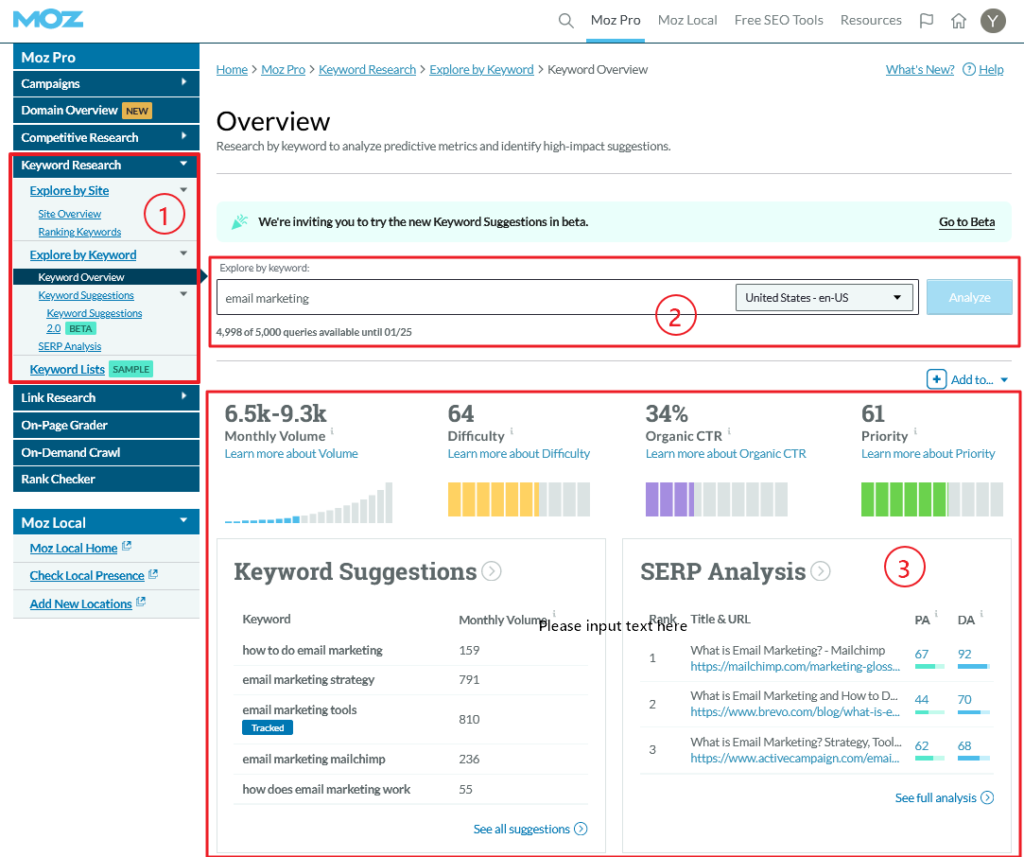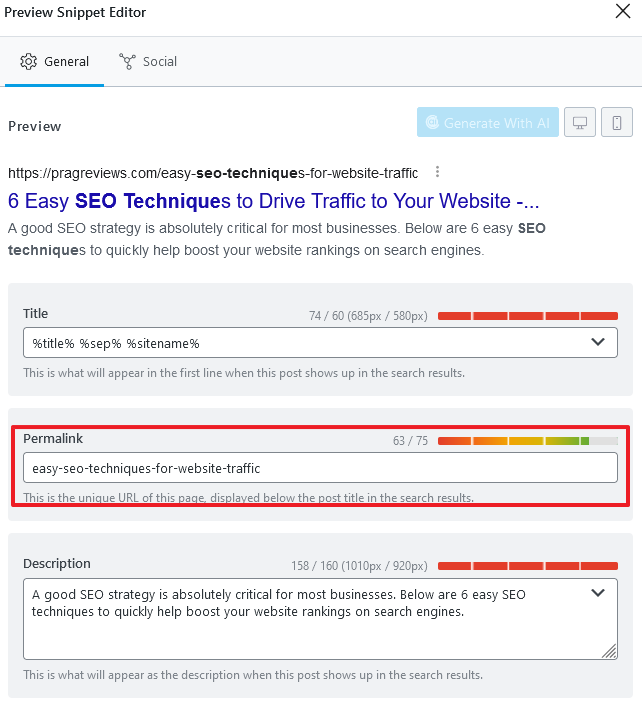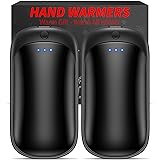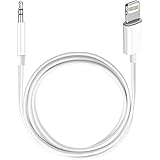Table of Contents
Introduction
Search engine optimization (SEO) has become an integral part of any successful online marketing strategy. As businesses strive to improve their online visibility and attract organic traffic, understanding the importance of on-page SEO has never been more crucial.
In our previous post entitled 6 Easy SEO Techniques to Drive Traffic to Your Website, we briefly touched on On-Page SEO as one of the techniques to help boost traffic to your site. We listed this SEO strategy as the #1 easy pick to start with.
In this article, we delve deeper and provide a comprehensive overview of On-Page SEO, including its definition, best practices, and practical tips to achieve success. Whether you are new to SEO or a seasoned marketer looking to optimize your website, this article will equip you with the essential knowledge and strategies to enhance your On-Page SEO efforts and ultimately drive more targeted traffic to your website.
What is On-Page SEO?
A Definition…
On-Page SEO refers to the optimization techniques and strategies implemented directly on a website to improve its organic search engine rankings and visibility. This, mainly, involves optimizing various elements on a webpage such as content, URL structure, meta tags and descriptions, and internal linking. These techniques help make the website more search engine-friendly.
Why is it Important?
This technique plays a crucial role in determining how well a website ranks in search engine results pages (SERPs). Here are some of the key reasons why it is very important:
- Improved Search Engine Visibility.
- By optimizing your website’s on-page elements, you increase its chances of appearing higher in search engine rankings.
- When your website ranks higher, it becomes more visible to users searching for relevant keywords, leading to increased organic traffic.
- Better User Experience.
- The focus of the technique is improving the structure, design, and content of your website.
- By providing a smooth and seamless user experience, such as fast-loading pages, easy navigation, and relevant content, you enhance user satisfaction.
- In turn, a positive user experience not only keeps visitors engaged but also encourages them to stay longer and explore more pages, ultimately reducing bounce rates.
- Targeted Keyword Optimization.
- Optimize your website’s content with relevant keywords that your target audience is searching for.
- By strategically placing these keywords in the title tags, headings, meta descriptions, and body content, search engines can better understand the relevance of your website to specific search queries. This increases the likelihood of your website appearing in search results for those keywords.
- Increased Click-Through Rates (CTR).
- Effective On-Page optimization, including compelling meta descriptions and enticing title tags, can (and will) significantly impact your website’s click-through rates.
- When your website appears in search results with appealing and informative snippets, users are more likely to click on your link, generating higher CTRs.
- This can lead to increased organic traffic and potential conversions for your business.
- Mobile-Friendly Optimization.
- Mobile usage is on the high and a majority of users will reach your website using a mobile device. For example, Statista, a website that tracks digital trends statistics, and insights (amongst others), forecasts that the number of mobile users will be about 7.5 billion worldwide by 2025.
- On-page optimization also includes ensuring your website is mobile-friendly to cater to mobile traffic. Also, search engines, like Google, prioritize mobile-responsive websites, as they provide a better user experience for mobile users.
- Optimizing your website for mobile devices ensures that you not only cater to a larger audience but also improve your chances of ranking higher in mobile search results.
The image below shows the Google Pagespeed Insights on how our blog is currently ranking on mobile devices. These are pretty good figures but there is always room for improvement:
- Performance – 98%
- Accessibility – 98%
- Best Practices – 95%
- SEO – 93%

In conclusion, On-Page SEO is a fundamental aspect of any successful SEO strategy. It helps search engines understand your website’s content and purpose, improves user experience, and increases your website’s visibility in search engine results pages (SERPs). By implementing best practices for On-Page optimization, you can enhance your website’s organic rankings and drive targeted traffic to your site.
Key Elements of On-Page SEO
Title Tags
Title tags are one of the most important On-Page SEO elements. They serve as the clickable headline for a search result and should accurately describe the content of the page. It is recommended to include relevant keywords in the title tag to improve search engine visibility and attract clicks from users.

Meta Descriptions
Meta descriptions provide a summary of the web page’s content and appear below the title tag in search results. While they do not directly impact search rankings, well-crafted meta descriptions can entice users to click on your link. Ensure that meta descriptions are concise, compelling, and contain relevant keywords to your content.
URL Structure
A well-structured URL can contribute to better user experience and search engine optimization. URLs should be descriptive, and concise. They ultimately should include keywords that accurately represent the content of the page. Avoid using generic or ambiguous URLs and instead focus on creating URLs that are easy to read and understand.
Headings
Headings, marked by HTML tags H1-H6, help structure the content of a webpage. The H1 tag should typically be used for the main page heading, while H2-H6 tags can be used to organize subheadings. Including relevant keywords in headings can provide additional context to search engines about the content on your page and improve its visibility in search results.
Keyword Optimization
Keyword optimization involves strategically incorporating relevant keywords throughout your webpage to improve its visibility in search results. It’s important to find a balance between using keywords naturally and avoiding keyword stuffing, which can negatively impact user experience and search rankings. Include keywords in the page’s title, headings, content, and meta tags for optimal optimization.
Content Quality
Creating high-quality, valuable content is essential for On-Page SEO success. Search engines prioritize content that is informative, engaging, and relevant to users’ search queries. Ensure that your content is well-written, error-free, and provides unique insights or solutions to users’ needs. High-quality content not only improves search rankings but also encourages visitors to stay on your website longer.
Internal Linking
Internal linking refers to linking one page of your website to another. It helps search engines understand the structure of your website and enables the search engines to establish relationships between different pages. Internal links also allow users to navigate your website more easily, increasing engagement and reducing bounce rates. When implementing internal links, use descriptive anchor text and ensure the linked pages are relevant to each other.
By considering these key elements, you can optimize your website’s content and structure to improve search engine visibility, attract more organic traffic, and ultimately achieve greater online success.
On-Page SEO Best Practices
Keyword Research and Analysis

One of the fundamental aspects of this SEO technique is conducting thorough keyword research and analysis. This process involves identifying relevant keywords and phrases that your target audience is likely to use when searching for information related to your website or content.
By understanding the keywords relevant to your industry or niche, you can optimize your content to rank higher in search engine results pages (SERPs). Keyword research tools such as Google Keyword Planner, Ahrefs, SEMrush, Moz, and Ubersuggest (which we both use) can help you identify the most valuable and competitive keywords in your industry.
Optimizing Title Tags and Meta Descriptions
Title tags and meta descriptions play a crucial role in on-page SEO. The title tag is the main headline that appears in search engine results, while the meta description provides a brief description of your page’s content. Optimizing these elements involves incorporating relevant keywords, writing compelling and concise descriptions, and ensuring they accurately reflect the content of the page. By optimizing your title tags and meta descriptions, you can improve your click-through rate (CTR) and attract more organic traffic to your website.
Creating SEO-friendly URLs

Creating SEO-friendly URLs is essential for On-Page optimization. A well-structured URL should be concise, descriptive, and include relevant keywords. Avoid using long strings of numbers or random characters in your URLs, as they are less user-friendly and may be difficult for search engines to understand.
Instead, aim for URLs that are easy to read and provide a clear indication of the page’s content. For example, a good SEO-friendly URL would be “yourwebsite.com/keyword-research-guide” instead of “yourwebsite.com/page1234”. The former is very clear to the user while the latter does not offer any idea as to the content of the page.
Optimizing Heading Tags
Heading tags (H1, H2, H3, etc.) are important for structuring your content and signaling its hierarchy to search engines. The H1 tag should be used for the main heading of your page, while subsequent headings (H2, H3, etc.) should be used for subheadings and sections within the content.
When optimizing heading tags, it’s essential to include relevant keywords and make them descriptive and compelling. This helps search engines understand the structure and relevance of your content, improving its visibility in search results.
Using Proper Keyword Placement
Proper keyword placement is crucial for SEO and rankings. It’s crucial to incorporate relevant keywords into your content naturally, ensuring you avoid keyword stuffing while maintaining relevance. Incorporate keywords in the title, headings, subheadings, and throughout the body of your content.
However, ensure that the flow and readability of your content remain intact. Keyword placement should enhance the user experience and provide valuable information, rather than appearing forced or spammy.
Creating High-Quality and Engaging Content
Creating high-quality and engaging content is at the core of On-Page SEO. Search engines prioritize content that is valuable, relevant, and informative for users. Focus on producing comprehensive and well-researched articles, blog posts, or landing pages that address the needs and interests of your target audience.
Incorporate multimedia elements such as images, videos, and infographics to enhance the visual appeal and engagement of your content. The longer visitors stay on your website and the more they interact with your content, the better it signals to search engines that your content is valuable and deserving of higher rankings.
Implementing Internal Linking Strategies
Internal linking is another very effective On-Page SEO strategy that involves linking relevant pages and content within your website. By linking related articles, blog posts, or product pages, you can guide both users and search engines to navigate and discover more of your content.
Internal linking helps search engines understand the structure and hierarchy of your website, improves user experience, and distributes link equity throughout your site. When implementing internal linking strategies, ensure that the anchor text you use includes relevant keywords and provides context for the linked page.
By following these On-Page SEO best practices, you can optimize your website’s content and improve its visibility in search engine results. Remember to conduct thorough keyword research, optimize title tags and meta descriptions, create SEO-friendly URLs, utilize heading tags effectively, place keywords naturally, produce high-quality content, and implement internal linking strategies to enhance your website’s overall SEO performance.
Common On-Page SEO Mistakes to Avoid
When it comes to On-Page SEO, it’s important to follow best practices to ensure success and improve your website’s visibility in search engine rankings. However, there are some common mistakes that many website owners make, which can hinder their SEO efforts. In this article, we will discuss these mistakes and provide insights on how to avoid them.
Keyword Stuffing
Keyword stuffing is one of the most common On-Page SEO mistakes that website owners make. It involves excessively using keywords in an unnatural way within the content, with the intent of ranking higher in search engine results. However, keyword stuffing can negatively impact your website’s performance as search engines now focus on user intent and quality content.
Avoid keyword stuffing by focussing on creating high-quality, informative, and engaging content that naturally incorporates relevant keywords. Use keywords strategically and sparingly throughout your content, ensuring that it flows naturally and provides value to your readers.

Use free plugins like RankMath (above image) or Yoast to help you avoid keyword stuffing. For example, RankMath, which we use on our site, is very easy to install and configure. As you write your article, it will give you hints when keywords are over (or under)-used.
In our articles, we always err on the side of caution by going on the lower side by keeping it between 1 and 1.15% based on this guide on the RankMath blog – that is Section 10.3 of the article entitled Score 100/100 With Rank Math Post Tests. Numerous sources mention different figures on the “keyword density” recommended for good SEO. Do your research and make your decisions based on that information.
Duplicate Content
Using duplicate content on your website can harm your SEO efforts. Search engines penalize websites that have duplicate content as it creates a poor user experience and diminishes the credibility and uniqueness of your website.
To avoid duplicate content issues, ensure that each page on your website has unique and valuable content. Conduct regular checks to identify and remove any duplicate content that may exist, whether it’s within your website or if it has been copied from other sources. Implement canonical tags to indicate the source of content if you have similar content on multiple pages.
Ignoring Mobile Optimization
With the increasing use of smartphones and tablets, optimizing your website for mobile devices is crucial. Ignoring mobile optimization is a significant mistake that can negatively impact your website’s SEO performance. Search engines prioritize mobile-friendly websites, and users expect a seamless experience on their mobile devices.
To ensure mobile optimization, use responsive web design to create a website that adapts to different screen sizes and resolutions. Optimize your website’s loading speed for mobile devices, simplify navigation, and make sure that all content is easily accessible and readable on smaller screens.
Poor User Experience
Providing a positive user experience is essential for both your website visitors and search engines. If your website has a poor user experience, visitors are likely to leave quickly, leading to a higher bounce rate and lower search engine rankings.
To improve user experience, focus on website design, navigation, and usability. Your website must load very quickly, must have clear and intuitive navigation, and must provide valuable and relevant content. Optimize images and videos for faster loading times and make sure that your website is easy to navigate on both desktop and mobile devices.
Lack of Proper Header Tag Usage
Header tags (H1, H2, H3, etc.) are important elements of On-Page SEO that can help search engines understand the structure and hierarchy of your content. However, many website owners neglect to use proper header tags or use them incorrectly.
To optimize header tags, use descriptive and relevant keywords in your H1 tag, which represents the main heading of your page. Utilize H2, H3, and other header tags to organize your content into sections and subsections, making it easier for both users and search engines to navigate and understand your content.
Neglecting Internal Linking
Internal linking is an effective SEO strategy that helps search engines discover and index more pages on your website. Neglecting internal linking can limit the visibility of your content and make it harder for search engines to crawl and understand your website’s structure.
To improve internal linking, strategically link relevant pages within your website’s content. Use descriptive anchor text that includes relevant keywords to provide context and improve user navigation. Ensure that your internal links are natural, valuable, and add to the overall user experience.
By avoiding these common on-page SEO mistakes, you can optimize your website for better search engine rankings, increase organic traffic, and provide a positive user experience. Implement these best practices and regularly monitor and optimize your website to stay ahead in the competitive online landscape.
Monitoring and Measuring On-Page SEO
As a crucial aspect of any successful SEO strategy, monitoring and measuring on-page optimization techniques is essential for achieving higher search engine rankings and attracting more organic traffic to your website. By keeping a close eye on the performance of your on-page SEO efforts, you can identify areas for improvement and make data-driven decisions to optimize your website further. In this article, we will explore three key aspects of monitoring and measuring on-page SEO: tracking keyword rankings, analyzing website traffic, and utilizing web analytics tools.
Tracking Keyword Rankings
Tracking keyword rankings is an integral part of monitoring the effectiveness of your SEO efforts. By regularly monitoring the positions of your target keywords in search engine results pages (SERPs), you can assess the impact of your optimization techniques and make necessary adjustments.
There are various tools available, such as SEMrush, Moz, and Ahrefs, that can help you track keyword rankings. These tools provide valuable insights into keyword performance, including fluctuations in rankings, search volume, and competition levels. By analyzing this data, you can identify which keywords are driving the most traffic and conversions, allowing you to focus your efforts on optimizing those specific keywords.
Analyzing Website Traffic
Analyzing website traffic is another crucial aspect of monitoring and measuring on-page optimization. By understanding the traffic patterns on your website, you can gain insights into visitor behavior, identify popular pages, and determine the sources of your traffic.
Tools like Google Analytics offer a wealth of information, including the number of visitors, bounce rate, time spent on each page, and conversion rates. By analyzing this data, you can identify which pages are performing well and which ones may need improvement. Additionally, you can track the effectiveness of your SEO strategy and efforts by looking at the organic traffic segment, which shows the number of visitors coming from search engines.
Ensure that you constantly monitor changes in organic traffic over time to help you gauge the success of your SEO strategies and identify any potential issues.
Using Web Analytics Tools
To effectively monitor and measure On-Page SEO, utilizing web analytics tools is essential. These tools provide valuable data and insights that can help you optimize your website for better search engine rankings. Google Analytics, for example, offers a wide range of features, including traffic analysis, user behavior tracking, conversion tracking, and goal setting. By setting up specific goals and tracking conversions, you can measure the success of your on-page SEO efforts in terms of lead generation, sales, or any other desired outcome.
Additionally, web analytics tools allow you to create custom reports and dashboards, providing a comprehensive view of your website’s performance. By regularly reviewing these reports, you can identify trends, spot opportunities, and make data-driven decisions to improve your on-page SEO strategy.
Monitoring and measuring your On-Page strategy is crucial for the success of your website. By tracking keyword rankings, analyzing website traffic, and utilizing web analytics tools, you can gain valuable insights into the effectiveness of your SEO efforts. This information will enable you to make informed decisions, optimize your website further, and ultimately achieve higher search engine rankings and increased organic traffic.
Conclusion
In conclusion, mastering On-Page SEO is essential for any website looking to achieve success in search engine rankings. By following the best practices discussed in this article, such as optimizing title tags, meta descriptions, and URL structures, as well as incorporating relevant keywords and providing high-quality content, website owners can greatly improve their chances of attracting organic traffic and increasing their visibility online.
By constantly staying updated with the latest SEO trends and techniques, and consistently monitoring and analyzing website performance, businesses can stay ahead of their competitors and establish a strong online presence.
Remember, On-Page SEO is not a one-time task but an ongoing process that requires continuous optimization and refinement to stay relevant in the ever-evolving digital landscape.
On-Page SEO FAQs
What exactly is On-Page SEO?
This is an SEO technique that deals with optimization strategies applied directly to a website’s content to improve its ranking and visibility in search engine results. This includes optimizing content, URL structure, meta tags, and internal linking.
Why is it an important SEO technique?
It is very crucial for improving search engine visibility, enhancing user experience, optimizing for targeted keywords, increasing click-through rates, and ensuring mobile-friendliness, all of which contribute to higher organic traffic and potential conversions.
How does it differ from Off-Page SEO?
This SEO strategy focuses on optimizations within your website, such as content, meta title, and description tags while Off-Page SEO involves external factors like backlinks and social media marketing.
What are its key elements?
Key elements include title tags, meta descriptions, URL structure, headings, keyword optimization, content quality, and internal linking.
How do I optimize my title tags and meta descriptions?
Optimize title tags and meta descriptions by including relevant keywords, making them compelling and concise, and ensuring they accurately reflect your page’s content.
What is the significance of mobile optimization in this SEO technique?
With the increasing use of mobile devices, mobile optimization is vital for providing a good user experience and improving rankings, as search engines prioritize mobile-friendly websites.
Can it impact my website’s loading speed?
Yes, part of this SEO strategy involves optimizing website elements like images and scripts that can significantly impact loading speed, which is a crucial factor for both user experience and search engine rankings.
How often should I review and update my On-Page SEO?
This SEO strategy must not be taken as a one-time task but an ongoing process. Regular reviews and updates are necessary to keep up with search engine algorithm changes and evolving user behaviors.
What are common mistakes to avoid when implementing it?
Common mistakes include keyword stuffing, using duplicate content, ignoring mobile optimization, providing poor user experience, incorrect use of header tags, and neglecting internal linking. You can avoid keyword stuffing by using tools like RankMath or Yoast which directly display statistics on your post before you can publish it.
How can I track the effectiveness of my SEO efforts?
Utilize tools like Google Analytics to track keyword rankings, analyze website traffic, and monitor user behavior. Regularly reviewing these metrics helps assess the impact of your SEO strategies.




